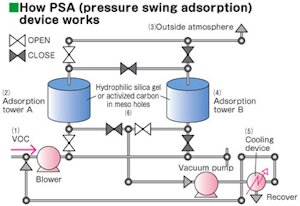Rethinking AGW, Part 4: Global Coping
 | | Nothing an ice pack can't fix |
For this installment in my exercise to re-evaluate my understanding of manmade global warming, I am going to focus on the carbon cycle. Specifically, I'm going to address a lingering question from my last article on the matter: how well does the Earth compensate for changes in atmospheric carbon dioxide levels? As with every AGW question, the two extremes have ready answers. The alarmists insist that the Earth can't compensate quickly enough and that current carbon trends are spiraling out of control, while the deniers show complete faith in Mother Nature's ability to adjust to changing conditions. Clearly, some moderation is called for. Now, just to be clear, I am not saying that all people either fall into the alarmist or denialist camp--in fact, I think most rational people fall somewhere inbetween--but treating the subject as a dichotomy is more illuminating than treating it like a spectrum. I am not, in any way, trying to insult anyone who has an opinion on the matter that is different from mine, because everyone is entitled to his or her own opinion, even if it is wrong.
In order to get a handle on the question of the planet's ability to cope with high CO2 levels, let's go back in time a little bit, say 450 million years or so. According to the most respected historical climate models, atmospheric CO2 levels were sitting somewhere between 2,400 and 9,000 ppm. While that is a huge margin of error, even the lowest end of it--2,400 ppm--is over six times the current level of CO2. Somewhere during this period of intensely high CO2 concentrations is the Late Ordovician Era, which saw glaciation--a growth in the planet's ice--rather than warming.
On the face of it, this seems to cast doubt on the argument that higher CO2 levels necessarily causes global warming. It also apparently renders insignificant the 100 ppm increase over the last 250 years. However, it's never that simple. For one thing, the sun, 450 million years ago, was significantly dimmer than it is today, which means that CO2 levels needed to be high in order to maintain surface temperatures that would be suitable for newly arriving life. Additionally, it is possible that the glaciation that occurred during the Late Ordovician--which happened in a relatively "quick" one million years--could have been going on during an undetectable short-term dip in CO2 levels.
 | | Quick, more CO2! |
So, while these explanations satisfy the apparent contradiction raised by the Late Ordovician, they highlight two important factors: the impact of the sun, which is a topic for another day, and more relevantly, the startling ability of the Earth to compensate. Is it mere coincidence, as some of the true believers contend, that atmospheric CO2 levels have gone down while the sun has gotten hotter? Applying the anthropic principle, it may not be as crazy as it sounds, though it still strikes me as incredibly unlikely. Nevertheless, though I would argue that the Earth has shown an amazing resilience in the face of natural fluctuations of a billion different factors, I would also point out that the planet's compensation mechanisms usually function over long stretches of geologic time and that, for short-term changes (like a 250 year hiccup), it might not be so accommodating.
What it all comes down to are sinks and sources, which are the Earth's respiration of carbon dioxide. The Earth breathes out through natural carbon sources--which include things like volcanoes and oxygen-breathing animals--and breathes in through carbon sinks, things like photosynthesis and oceanic sequestration. It is easy to assume that this cycle is static, that it maintains a natural balance at all times to keep climate steady. However, this assumption is historically wrong; the balance of the carbon cycle is rarely ever at a net zero, with ebbs and flows throughout climatological history that are accounted for by multiple different causes and effects. It might be beneficial for mankind to try to keep it all in balance, either through the curbing of carbon dioxide emissions or the creation of artificial carbon sinks, but it is entirely possible that the ebbs and flows of the carbon cycle are far too strong for our technology to control them.
I looked at carbon sources in the last installment and determined that mankind only contributes about 3.9% to the global total through the burning of fossil fuels. There are certainly other manmade factors, like deforestation and desertification, but they only add a tiny fraction of a percent. Also, for the record, volcanoes only contribute about 300 million tonnes of CO2 a year (on average), whereas fossil fuel burning produces 30 billion, meaning anthropogenic causes are 100 times as important as volcanoes. While it is possible that a really big, unusual volcano could potentially release much more carbon dioxide than mankind--as there is a ludicrous amount of carbon under the Earth's crust--it is safe to say that volcanoes aren't more important to the equation than humanity. Besides, if such a volcano were to erupt, we'd have more immediate concerns. Regardless, for today's purposes, I'm going to stick to the sinks, to the ways in which the Earth sucks up the carbon dioxide in the atmosphere.
 | | If the ocean is a sink, I'd hate to see the toilet |
By far the most powerful active sink is the ocean, though it has in various times doubled as a source. How the inorganic side of it works is that carbon dioxide is soluble in cool water, so the ocean surface, as it cools, absorbs CO2. When global conveyor currents drag this water into the deep at the planet's higher latitudes, the CO2 goes with it and remains in solution thanks to the higher pressures of deep water. This CO2 is then extracted by the ocean floor and becomes locked into the sediment so that, when the water pushes up again as it warms, it is free to take on more carbon dioxide at the surface. This process, known as the solubility pump, is capable of having a dramatic effect on atmospheric CO2 levels in relatively short spans of time.
The inevitable question, then, is whether or not the ocean can fully compensate for anthropogenic sources of CO2. Alas, this is hardly a settled question. While the IPCC and various other outlets argue that the ocean only takes in about a third of anthropogenic CO2 and that it will slowly take on less and less as the sediment gets saturated, more recent research has called that argument into question. One study published in Geophysical Research Letters in 2009, for example, finds that the absorbed fraction of airborne CO2 has remained remarkably constant in the last 250 years, despite dramatic increases in global CO2 emissions. This would suggest that the ocean's ability to absorb CO2 has not yet been compromised by oversaturation and can, given enough time, compensate for current levels of carbon in the atmosphere. Of course, that assumes that worldwide carbon emissions will decrease in the future. It also doesn't mention that this process can acidify parts of the ocean, something that would be, let's say, less than ideal.
 | | Well, gee, that simplifies things, doesn't it? |
The good news is that the ocean need not go it alone in maintaining the carbon cycle. There are plenty of other natural sinks in the world, and we are capable of maximizing their effects with little effort. Reforestation, no-till farming, and controlled burns all have the potential to greatly enhance the Earth's natural sinks, arguably enough to pick up the ocean's slack. Additionally, there are already methods for creating artificial carbon sinks, and as technology improves, it is entirely feasible for mankind to recapture, recycle, or store every molecule of CO2 it emits using things like gas separation membranes and pressure swing absorption. It is also possible to sequester carbon by injecting CO2 directly into underground geological formations or trapping it in the form of carbonite salts. The potential benefits of these technologies has already started a race behind the scenes to see who can come up with the best and most profitable way to scrub our atmosphere of carbon dioxide, and that holds far more promise for taming the carbon cycle than endless political conferences designed to whip the world's energy industries into submission.
But I digress into political territory best saved for another day. The bottom line is that the carbon cycle is far more complex than either the alarmists or the denialists would have you believe. The Earth is perfectly capable of taking care of itself in the long run, but in the short term, the science is far less certain. Because of the enormous multitude of confounding and chaotic factors, it is nigh impossible to say exactly how much of the human contribution has tipped the planet's balance or interfered with its cycles, but it is equally difficult to argue that we have had no effect. There are no simple answers, but if humanity has disrupted the carbon cycle, it is probably capable of restoring the scales in the future, although that too will no doubt have some unforeseen side effects. I will deal with the topic of side effects in the future, but for now, I leave you with a certainty that this debate isn't even close to its end.
-e. magill 3/13/2012
|
|